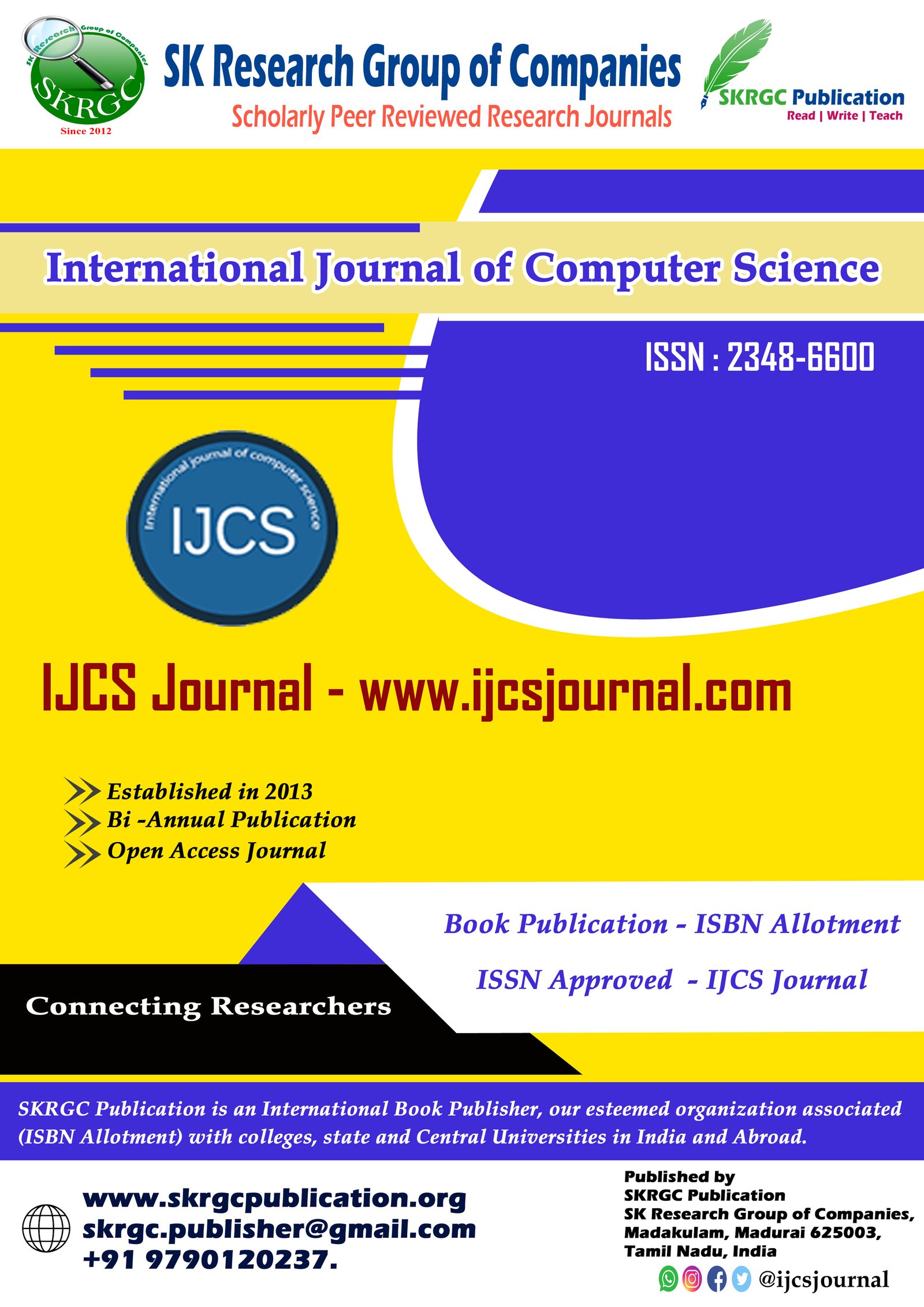Feature-Based X-Ray Image Classification: An Empirical Study
International Journal of Computer Science (IJCS) Published by SK Research Group of Companies (SKRGC)
Download this PDF format
Abstract
Medical image classification has been an important area of research in medical informatics and computer vision. In the early 2010s, before the widespread adoption of deep learning techniques such as convolutional neural networks (CNNs) and TensorFlow frameworks, researchers primarily relied on traditional image processing methods coupled with handcrafted feature extraction to achieve classification accuracy. This paper presents an empirical study conducted during 2013, focusing on the classification of X-ray images using MATLAB as the primary computational tool. The study involved acquisition of medical X-ray datasets, preprocessing for noise reduction, and extraction of statistical and texture-based features including histogram-based descriptors, Gray Level Co-occurrence Matrix (GLCM) features, and edge-based descriptors. These extracted features were then used as input to traditional classifiers such as Support Vector Machines (SVM), k-Nearest Neighbor (k-NN), and Decision Trees for evaluation. The primary objective was to analyze the discriminative power of feature maps derived from conventional image processing techniques. Results demonstrated that carefully engineered features, when combined with robust classifiers, could achieve significant classification accuracy in identifying anomalies within X-ray images. Although the limitations of handcrafted features included sensitivity to noise, variability across datasets, and lack of scalability, the work laid the groundwork for the evolution of later techniques. With the subsequent advent of deep learning, many of these limitations have been mitigated, yet the empirical findings of this study remain relevant as a benchmark and for understanding the transitional phase of medical image analysis research. The methodology and findings presented herein provide historical insights into the strategies adopted prior to deep learning dominance, highlighting their role in shaping the trajectory of medical image classification research.
References
A. Nomir and M. Abdel-Mottaleb, “A system for human identification from X-ray dental radiographs,” Pattern Recognition, vol. 38, no. 8, pp. 1295–1305, 2005.
[18] R. Y. Huang, J. Y. Wang, and L. P. Chen, “Caries detection in digital bitewing radiographs based on texture features,” IEEE Trans. Medical Imaging, vol. 23, no. 4, pp. 501–509, 2004.
[19] T. Ojala, M. Pietikäinen, and D. Harwood, “A comparative study of texture measures with classification based on featured distributions,” Pattern Recognition, vol. 29, no. 1, pp. 51–59, 1996.
[20] N. Dalal and B. Triggs, “Histograms of Oriented Gradients for human detection,” in Proc. IEEE Conf. Computer Vision and Pattern Recognition (CVPR), pp. 886–893, 2005.
[21] D. G. Lowe, “Distinctive image features from scale-invariant keypoints,” International Journal of Computer Vision, vol. 60, no. 2, pp. 91–110, 2004.
[22] S. Mallat, “A theory for multiresolution signal decomposition: the wavelet representation,” IEEE Transactions on Pattern Analysis and Machine Intelligence, vol. 11, no. 7, pp. 674–693, 1989.
[23] N. Otsu, “A threshold selection method from gray-level histograms,” IEEE Transactions on Systems, Man, and Cybernetics, vol. 9, no. 1, pp. 62–66, 1979.
[24] M. Kass, A. Witkin, and D. Terzopoulos, “Snakes: Active contour models,” International Journal of Computer Vision, vol. 1, no. 4, pp. 321–331, 1988.
[25] I. Guyon, J. Weston, S. Barnhill, and V. Vapnik, “Gene selection for cancer classification using support vector machines,” Machine Learning, vol. 46, no. 1–3, pp. 389–422, 2002.
www.ijcsjournal.com Volume 13, Issue 2, No 01, 2025. ISSN: 2348-6600
REFERENCE ID: IJCS-SI-25 PAGE NO: 001-013
All Rights Reserved ©2025 International Journal of Computer Science (IJCS Journal)
Published by SK Research Group of Companies (SKRGC) - Scholarly Peer Reviewed Research Journals
www.skrgcpublication.org Page 13
[26] R. O. Duda and P. E. Hart, “Use of the Hough transformation to detect lines and curves in pictures,” Communications of the ACM, vol. 15, no. 1, pp. 11–15, 1972.
[27] L. M. Hadjiiski, M. A. Sahiner, and H. P. Chan, “Advances in computer-aided diagnosis for medical imaging: CAD in radiology,” Academic Radiology, vol. 18, no. 10, pp. 1180–1196, 2011.
[28] H. Greenspan, B. van Ginneken, and R. M. Summers, “Guest editorial deep learning in medical imaging: Overview and future promise of an exciting new technique,” IEEE Transactions on Medical Imaging, vol. 35, no. 5, pp. 1153–1159, 2010 (survey perspective pre-CNN boom).
[29] J. C. Bezdek, J. Keller, R. Krishnapuram, and N. R. Pal, Fuzzy Models and Algorithms for Pattern Recognition and Image Processing, Springer, 2005.
[30] A. K. Jain, R. P. W. Duin, and J. Mao, “Statistical pattern recognition: A review,” IEEE Transactions on Pattern Analysis and Machine Intelligence, vol. 22, no. 1, pp. 4–37, 2000.
Keywords
X-ray Image Classification, MATLAB, Feature Extraction, Medical Image Analysis, Support Vector Machine, Texture Analysis, Pre-Deep Learning

